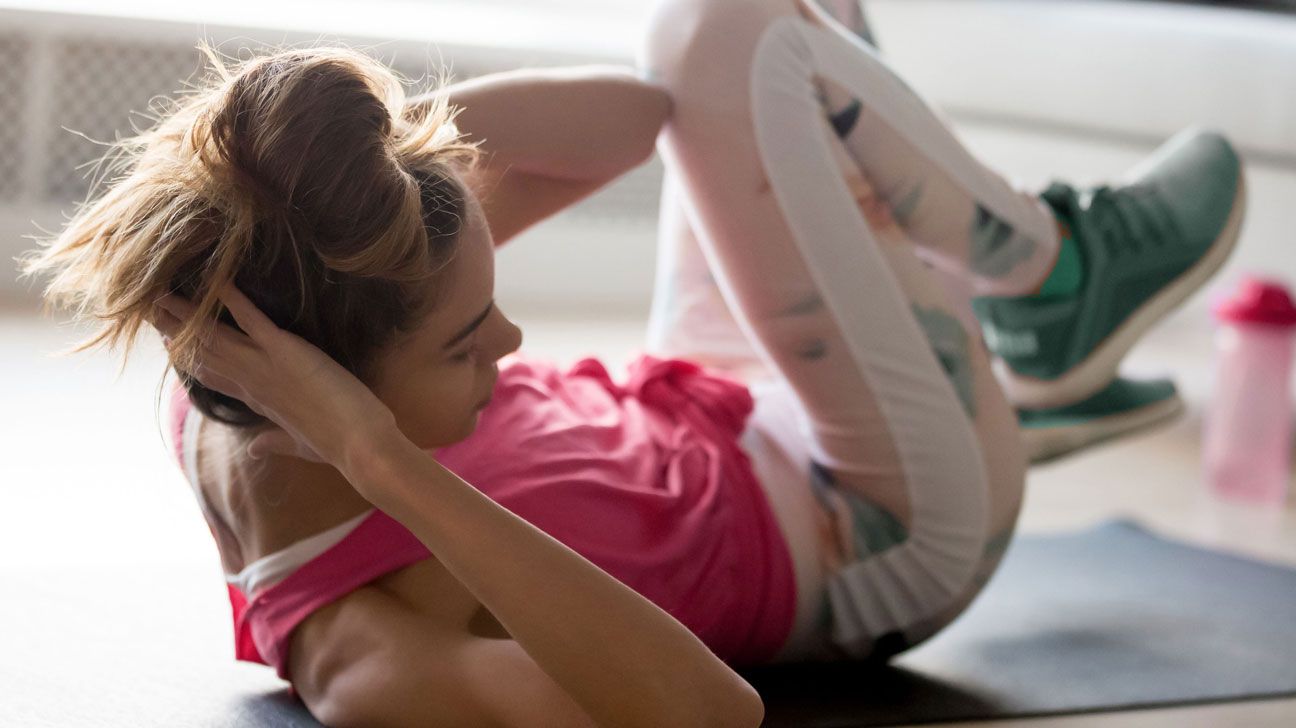Fitness pros love their jargon — plyometric, isometric, calisthenic.
But what does it actually mean for the average bro Joe who’s just trying to get through leg day? In short, these terms describe different types of movement in relation to exercise. We’re here to teach you about calisthenics — exercises that use body weight to challenge and build muscle.
All those Greek and Roman soldiers who conquered foreign lands didn’t prepare by lifting weights at a globo-gym. And those ripped gymnasts, professional athletes, and competitive CrossFitters? Yup, they do calisthenics too.
Here’s everything you need to know about this style of exercise and how to add it to your routine.
Officially, calisthenics is a type of fitness training that uses gravity and the weight of one’s own body as the primary source of resistance. More simply, it’s everything most of us hated about gym class.
Remember pull-up day? That was calisthenics. So were those sit-up tests and all those push-ups and burpees your coach made you do as punishment. Squats, too, count as calisthenics, as do lunges, dips, bear crawls, and mountain climbers.
What is a push-up, after all, but a bench press without the bar? And most of those machines at the gym simply simulate or pile weight onto what nature built us to do on our own. In the calisthenics arena, the most you’ll need to buy is a doorframe pull-up bar.
The power of calisthenics is enormous. Calisthenics training may not be trendy or high-tech, but it’ll get you where you want to go, whether that’s general fitness or a muscular physique. It’s good for weight loss, too, since muscle burns calories faster than fat, even at rest.
If you aspire to a specific athletic goal, like a faster 5K, a heavier clean and jerk, or better performance on the court, calisthenics training is an essential part of the foundation.
Consider the evidence. In a 2018 study, researchers found no significant difference in gains in bench press ability between men who trained with barbells and those who did calisthenic push-ups. Think about that: No barbell but major gains in a barbell movement.
A 2017 study framed it even more clearly. Comparing men who did calisthenics for 8 weeks to men in a control group, its authors reached the undeniable conclusion that calisthenics training is a “feasible and effective training solution to improve posture, strength, and body composition without the use of any major training equipment.”
Not bad, right?
Everyone knows push-ups and pull-ups are generally good for you. Ditto for burpees, the fitness equivalent of broccoli (unpleasant but healthy).
Far fewer people know what to do with that knowledge or how to properly train with calisthenics. The exercises are one thing. How to organize them into an effective workout is something else entirely.
Luckily, you’re not on your own. Here are three of our favorite methods that combine calisthenic movements to light up those muscles and leave you drenched in sweat.
1. Tabata
One of the tried-and-true options is the Tabata Protocol (also known as Tabata for short), a form of high-intensity interval training developed by Izumi Tabata for Olympic speedskaters. If you’re pressed for time but looking for a good burn, there’s nothing better.
Any movement will do (check out these exercises for inspo). What matters is duration and intensity. Grab your stopwatch and perform each exercise at maximum effort for 20 seconds, with 10 seconds of rest in between. Repeat for 8 minutes.
If you’re not completely winded and sweaty at the end of the cycle, tweak your exercise choices (or maybe push a little harder next time).
2. EMOM
Another great option is the EMOM, or Every Minute on the Minute, workout. Here, too, the specifics are up to you.
You choose the movements and the total time. Then just go through the circuit, performing a target number of reps of one movement every minute. Be sure to allow yourself 10 to 15 seconds of rest each round.
3. Deck of cards (not just for drinking games)
For a little more fun and greater variety, grab a deck of cards and some workout buddies. Once again, the movements are up to you (and your friends). You just need one movement per person.
Using a traditional deck of playing cards, draw one card at a time and perform that number of reps (for example, the seven of spades would require seven burpees). Then, rotate to the next movement, flip a card, and repeat until you complete the deck.
Face cards are typically worth 10. Aces can be whatever you like, anything from a short run or jump-rope to a brief rest.
One of the greatest things about calisthenics is that it can form your entire fitness regimen or just one part of it. Just because you do calisthenics doesn’t mean you can’t also lift weights, swim, or ride your bike.
In that sense, calisthenics is the perfect form of exercise. It’s safe, effective, flexible, and inexpensive. Anyone can do it anytime and anywhere. Not even broccoli can claim to be that good.


